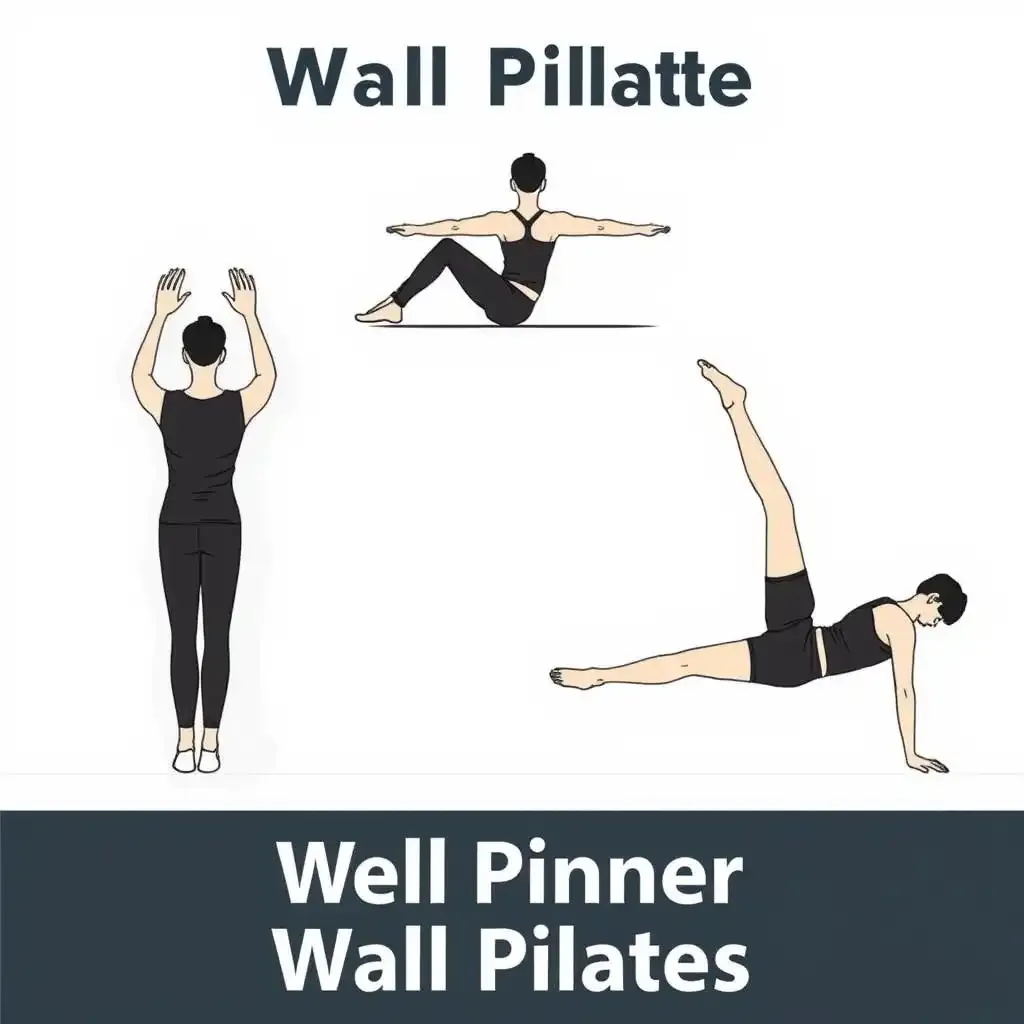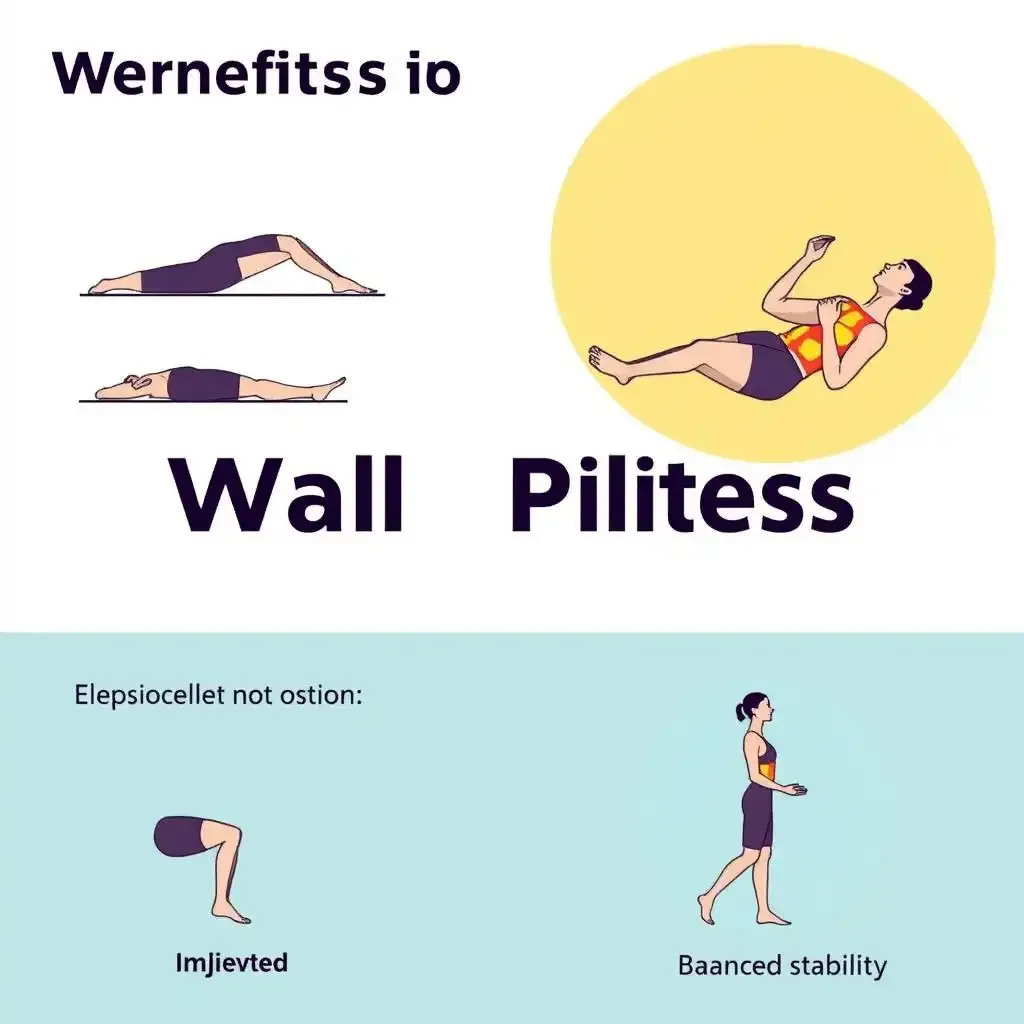Table of Contents
Ready to sculpt a stronger, more flexible you? Forget expensive gym memberships and complicated equipment. The secret to a fantastic core workout is right there in your home – your wall! This comprehensive guide from kizworld will introduce you to the world of wall Pilates, a surprisingly effective and accessible workout that leverages the simple support of a wall to achieve amazing results. We'll cover everything from beginner-friendly exercises to more advanced routines, exploring how this unique form of Pilates can tone your abs, strengthen your muscles, and boost your flexibility. Get ready to find the capability of wall Pilates and transform your fitness progression. Whether you're a complete newbie or already familiar with Pilates, this guide offers something for everyone. Let's begin on this exciting progression together and open up the full potential of your body!
Awesome Wall Pilates Workout: Ultimate Guide
Wall Pilates Workout: Getting Started
Finding Your Wall and Your Posture
Hey there, fellow fitness enthusiast! Let's get started with wall Pilates. It's seriously easier than you think. First, find a nice, sturdy wall. Think of it as your personal Pilates partner – it's gonna support you, not judge you. Then, stand about a foot away from it. Get comfy, but keep your core engaged. That means tightening your tummy muscles – like you're trying to button really tight jeans! Good posture is key. Imagine a string pulling you up from the crown of your head. This helps you get the most out of every exercise and keeps you safe.
For beginners, I'd suggest starting with a wall-supported spine stretch. This is like a gentle hug from the wall! It's super simple. Stand facing the wall, about arm's length away. Place your hands on the wall at shoulder height and gently lean forward, letting your back round. Hold for 15-30 seconds. You'll feel a nice stretch in your back. Feel that? It’s amazing. You can check out more tips on Pilates speed for a better understanding. Remember to breathe deeply throughout the exercise. Inhale and exhale slowly, feeling the stretch deepen with each breath. It’s like giving your spine a mini-massage.
Exercise | Description | Benefits |
|---|---|---|
Wall Spine Stretch | Leaning forward against the wall, letting your back round | Stretches the back muscles and improves posture |
Wall Roll-Up | Lying on your back with feet on the wall, slowly rolling up and down | Strengthens the core and improves flexibility |
Your First Wall Pilates Exercises
Once you've got your posture down, let's try a few basic wall Pilates exercises. I love the wall roll-up. It's like a magic trick for your core. Lie on your back with your feet flat against the wall, knees bent. Slowly roll your spine up towards the ceiling, one vertebra at a time, using your core muscles. Your head should be the last thing to lift off the floor. Then, slowly roll back down, one vertebra at a time. Repeat this five to ten times. It's a bit like peeling a banana, only way cooler. And way better for your abs.
Another great beginner exercise is the wall single leg stretch. Sit about a foot away from your wall, legs stretched out in front of you. Lean back slightly, supporting your weight with your hands on the wall behind you. Then, slowly lift one leg off the floor, keeping it straight, and reach towards your toes. Hold for a few seconds. Switch legs and repeat. Think of it as a graceful dance with the wall, only it's way less embarrassing. For more details, you can explore the benefits of Pilates on our website. This improves your core strength and leg flexibility, and makes you feel all graceful and stuff.
- Wall Roll-Up
- Wall Single Leg Stretch
- Wall Knee Folds
Essential Wall Pilates Exercises for Beginners
The Wall Sit: Your New Best Friend
Okay, so think about this: you're at a fancy party, but instead of awkwardly standing around, you're doing a super-secret workout. That's the wall sit! Find a nice, empty wall. Stand with your back flat against it, feet shoulder-width apart, about a foot away from the wall. Now, slowly slide down the wall until your thighs are parallel to the floor. Hold that position – it's like a superhero pose, only way more comfortable. Hold it for as long as you can, but don't push yourself too hard, especially when you're starting out. Aim for 30 seconds, then work your way up. This strengthens your legs and glutes, and seriously tones your core. It's surprisingly tough! You might be surprised how quickly you feel the burn. For more great beginner tips, check out our post on beginner Pilates exercises.
Remember to breathe! Inhale deeply and exhale slowly. Don't hold your breath; that's a recipe for disaster. And if you feel like you’re gonna fall over, just gently slide back up the wall. It’s all about building strength gradually. You’re not aiming for world-record-breaking wall sits, just steady progress. Think of it as a friendly competition with yourself; can you beat your last time?
Exercise | Description | Time |
|---|---|---|
Wall Sit | Slide down the wall until thighs are parallel to the floor | 30 seconds, gradually increase |
Wall Push-Ups: A Gentle Giant
Next up: wall push-ups! These are like regular push-ups, but way kinder to your wrists and easier on your body. Find your trusty wall again. Stand facing it, arms slightly wider than shoulder-width apart, hands flat against the wall at chest height. Slowly lean forward, bending your elbows, until your chest almost touches the wall. Push back up to the starting position, keeping your core engaged. That means squeezing those tummy muscles tight! Repeat 8-12 times. It's like giving your chest and arms a gentle wake-up call. These are perfect for building upper body strength without all the pressure of floor push-ups. Remember to keep your back straight and your core tight throughout the exercise. You can learn more about building a strong core with this Pilates ab workout.
Don't worry if you can't do many at first. It's a trip, not a race! Start with what you can manage, and gradually increase the number of repetitions as you get stronger. Think of it as training your body to become a super-strong wall-pushing machine! And remember, even small improvements are huge victories. Celebrate those milestones, and keep pushing (gently, of course) yourself.
- Focus on proper form over speed.
- Listen to your body and rest when needed.
- Celebrate small victories!
Leg Extensions: Finding Your Balance
Let's add some leg work to the mix! Stand facing the wall, hands lightly placed on it for balance. Lift one leg straight out in front of you, keeping it parallel to the floor. Hold for a few seconds, then lower it slowly. Repeat 10-15 times on each leg. It's like a tiny ballet move, only much less fancy. This exercise is great for improving leg strength, balance, and stability. Remember to keep your core engaged throughout the exercise, and avoid swinging your leg; controlled movements are key. Focus on feeling the burn in your leg muscles. For more tips on Pilates and building strength, see our article on Pilates as strength training.
To make it even more challenging, you can try pulsing your leg while it’s extended – small, controlled up-and-down movements. But remember, quality over quantity. It's better to do fewer repetitions with perfect form than many with sloppy form. And don't forget to breathe! Deep breaths help you maintain control and prevent exhaustion. This is a fantastic way to tone those leg muscles and improve your balance.
Essential Wall Pilates Exercises for Beginners
Advanced Wall Pilates Workout Routines
Taking it Up a Notch: Adding Resistance and Intensity
Hey there, Pilates pals! Now that you've mastered the basics, let's crank up the intensity. We're talking about adding some resistance to those wall Pilates exercises. One simple way is to use resistance bands. Imagine these bands as tiny, elastic helpers, adding a little extra challenge to your movements. Wrap a resistance band around your thighs during leg extensions or around your ankles for a more challenging leg work. You'll feel the burn a little more intensely, and that's a good thing! It's like adding a secret ingredient to your Pilates recipe, making it even more effective. Remember to choose a resistance band that's challenging but not impossible; you should be able to complete the exercises with good form. If you're using bands for the first time, start with lighter resistance and gradually increase it as you get stronger. For more tips on building strength, check out our article on .
Another way to up the ante is to increase the duration of your holds or the number of repetitions. Let's say you're doing wall sits. Instead of holding for 30 seconds, try holding for a minute. Or, instead of doing 10 leg extensions, try 15. These small increases can make a huge difference in your strength and endurance. It’s like slowly climbing a mountain; each small step brings you closer to the summit, and the view from the top is spectacular! But remember, listen to your body. It’s okay to take breaks if you need to. Your body isn’t a machine; it’s a marvel of nature, and it deserves respect. And if you're feeling particularly ambitious, combine both resistance bands and increased reps for a supercharged workout. You'll be amazed at how quickly you see improvement.
Modification | Description | Benefits |
|---|---|---|
Resistance Bands | Add resistance bands to legs or arms | Increased intensity and muscle engagement |
Increased Reps/Holds | Increase the number of repetitions or hold time | Improved strength and endurance |
Wall Pilates Progressions: Level Up Your Routine
Let's talk about progressions. Once you're comfortable with the basic exercises, it's time to make them more challenging. For example, with the wall roll-up, try lifting your legs higher towards the wall, engaging your hamstrings and glutes more. Or, during the single-leg stretch, try reaching your arms overhead while extending your leg. These are small changes, but they make a world of difference. They're like adding secret levels to your favorite video game; each new challenge unlocks a deeper level of strength and flexibility. You'll feel more engaged, and your body will thank you for it. For more ideas on challenging yourself, check out our article on .
Another way to make things more interesting is to incorporate different variations of the exercises. Instead of a straight-leg extension, try a bent-knee extension. Or, instead of a regular wall push-up, try a decline wall push-up (placing your feet higher than your hands). These variations target different muscles and challenge your balance and coordination. It’s like adding new moves to your dance routine; each new variation adds an element of surprise and keeps things exciting. Remember, progression is key. Don’t be afraid to push your limits, but always prioritize good form and listen to your body. You can always modify the exercises to suit your fitness level, and remember, there's no shame in taking a break when you need one.
- Increase the angle of your leg lifts.
- Add arm movements to increase core engagement.
- Try different variations of each exercise.
Advanced Wall Pilates Workout Routines
Benefits and Considerations of a Wall Pilates Workout
Strengthening Your Core Like a Superhero
Okay, so think about this: you're a superhero, but instead of fighting villains, you're fighting...well, your own flabby tummy! Wall Pilates is your secret weapon. It's seriously amazing for building core strength. Think of your core as the center of your strength – it's what keeps you stable and strong, like a tree trunk holding up a whole tree. Wall Pilates works all those deep core muscles, making you stronger and more balanced. I've seen it firsthand – my posture's improved dramatically since I started using the wall! Plus, a strong core helps with everyday stuff, like lifting groceries or playing with your pet. It's not just about looking good; it's about feeling powerful and ready to take on the world, one wall sit at a time!
I love how wall Pilates helps with balance too. It’s like learning to ride a bike – at first, you wobble a bit, but with practice, you gain confidence and stability. As you become stronger, you’ll find yourself able to hold poses longer and execute movements with greater control. You can check out more balance tips on our article about . This added stability translates into everyday life, making you less prone to slips and falls, especially important as we get older.
Benefit | Example |
|---|---|
Improved Core Strength | Easier time lifting heavy objects |
Enhanced Balance | Reduced risk of falls |
Flexibility That'll Make You Dance
I used to be so stiff! Like a rusty old robot. But wall Pilates has changed all that. The exercises gently stretch your muscles, making you more flexible. Think of it as giving your body a warm hug, releasing all that tension. It’s like magic! I can touch my toes now – something I couldn't do before. Increased flexibility isn't just about showing off your fancy yoga poses; it helps with everyday movements, making you more comfortable and less prone to aches and pains. It even improves your posture, making you stand taller and more confident. You might even find yourself wanting to dance more – and that's a great way to stay active, too!
For those who are new to Pilates, the wall provides a reassuring support, allowing beginners to focus on proper form and alignment without the fear of falling. It's like having a friendly guide to help you master the movements. Remember, consistency is key. The more you practice, the more flexible you'll become. It's a process, not a race, so be patient and celebrate your progress along the way. You can learn more about Pilates progression in our article about .
- Improved posture
- Increased range of motion
- Reduced muscle soreness
Listen to Your Body (Seriously!)
Now, here's the important part: listen to your body. Wall Pilates is amazing, but it's not a competition. Don't push yourself too hard, especially when you're starting out. If something hurts, stop! It's better to take a break than to injure yourself. Think of your body as a precious instrument – you wouldn't force it to play a song it's not ready for, would you? This is why proper form is so important. If you're not sure about something, check out videos or ask a professional. Remember, consistency and proper form are more important than pushing yourself too hard. And don't forget to warm up before you start and cool down afterward; it helps prevent injuries and makes you feel all relaxed and good.
Also, if you have any pre-existing conditions, talk to your doctor before starting any new workout routine. It’s always a good idea to get the all-clear from your healthcare provider, especially if you have any concerns or questions. They can offer personalized advice and ensure you're exercising safely and effectively. Remember, it's all about finding a workout that's right for you, one that helps you feel strong, healthy, and happy. For more insights into Pilates and your health, check out our article on the benefits of Pilates.
Benefits and Considerations of a Wall Pilates Workout
Final Thought
Incorporating a wall Pilates workout into your fitness routine offers a unique blend of accessibility, effectiveness, and versatility. By understanding the foundational exercises and progressively challenging yourself with more advanced routines, you can open up significant improvements in core strength, flexibility, and overall body tone. Remember to listen to your body, maintain proper form, and enjoy the process of strengthening your mind and body through this engaging and accessible workout. Happy pilating!